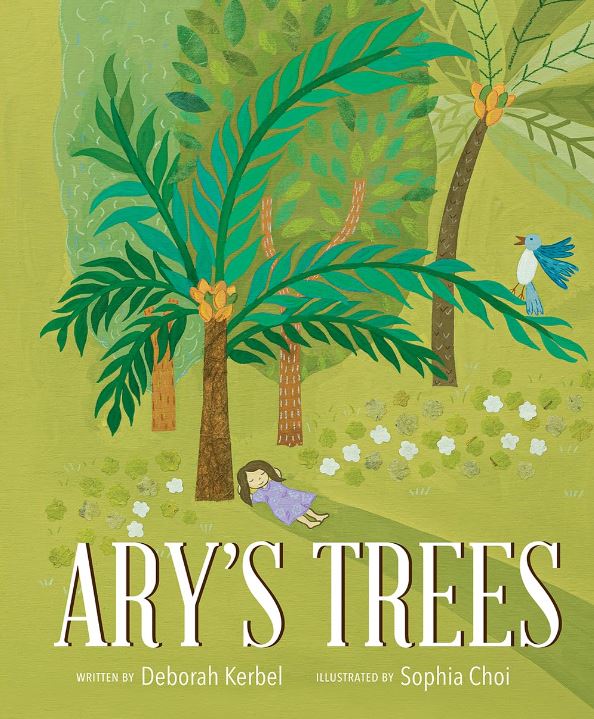Ary’s Trees

Ary’s Trees
Although this book was published in October of 2023, I read it during Earth Month, 2024, a most fitting timing as Ary’s Trees is a parable about the importance of trees to the life of the earth and everything on it.
Ary’s family has left their old island where life “hadn’t not been good for some time”. They find a new place to live, another island beautifully forested and full of colourful birds and a variety of other flora. Little Ary is delighted to breathe in the scent of greenery and hear the wind swishing through the leaves.
The settlers need wood for building houses and repairing their boats and so down come some of the trees.
Ary’s heart ached every time another tree fell.
“You’re too young to understand,” her father said when she protested.
“The trees are here for our use. There are lots to spare.”
Ary was old enough to remember hearing words like that before.
When the houses are complete, more trees are chopped down to clear land for growing crops. The settlement flourishes, and, because more people need more houses and more food, more wood is cut. The village is thriving, but the forest is disappearing because of the logging and burning going on all around.
Now Ary’s sadness erupted into anger. She stomped her feet.
She yelled. She begged them to listen.
Some of her friends joined in. But the call of progress boomed
louder than a few small voices.
Her words disappeared along with the birds.
Eventually the island is been stripped of all its trees, and the lack of shade causes the fields to dry up and crops to fail. The inhabitants begin to talk about moving to another, greener island, to settle on and possibly to despoil that one. But Ary, now almost grown, has some young allies who agree that there must be a better way. This group declines to accompany the emigres.
When the day came to leave the island, Ary and her friends
walked to the shore. But instead of boarding the boat, they planted
their feet firmly in the sand. Ary waved as the boat disappeared
across the rolling ocean. This island was home.
And there was work to be done.
Work they do, planting, watering and nurturing all variety of vegetables, fruits and flowers, and welcoming back the birds, making their island green once more.
Kerbel, who is better known for her young adult fiction, has told a story aimed at younger readers in a straightforward and hardly subtle way. But the message is a worthwhile one, and the tone is gentle throughout, encouraging readers to think of better ways to manage the eco-system for the benefit of all. There is a strong indication that a new generation may have some answers. A note at the end summarizes the author’s impetus for writing the book.
Choi’s illustrations, with their muted colours and soft-edged shapes, are naïve in style but full of detail, telling the story of the evolution of the island from a lush paradise to the heavily-peopled tract that shows the stresses resulting from the clear-cutting. The work of the young pioneers who, at the end, have decided to revitalize the island shows in verdant hillsides and blossoms of all colours bordering the garden plots. Facial expressions – from sorrow to anger to satisfaction at the end – are clearly realized. There is one small vignette before the back endpage showing those who had left in the boat sad and still at sea.
The object lesson provided by Ary’s Trees would be enjoyed by individual youngsters who have a passion for ecology or by groups as part of a discussion about the sustainability of the planet.
Ellen Heaney, a retired children’s librarian, lives in Coquitlam, British Columbia.
